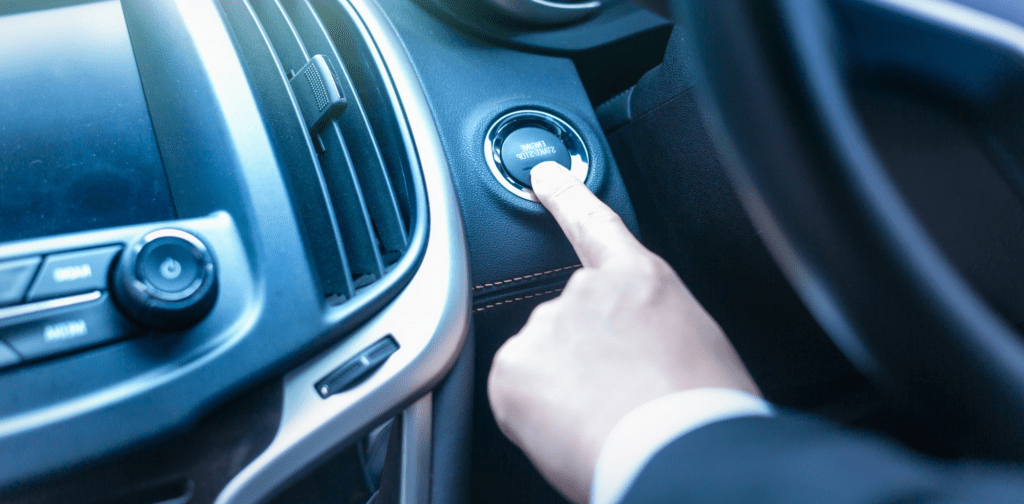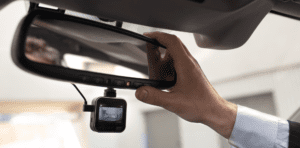Compare cheap car insurance
✔ Compare cheap car insurance quotes
✔ Over 110 insurance providers
✔ Get a quote in minutes
✔ Save up to £504*


When you’re ready to test drive a car, it’s possible you’re already smitten with it. However, the test drive lets you truly experience its performance and determine if it meshes with your daily life.
- Do I need insurance to test drive a car?
- What should I check on a test drive?
- What questions should I ask while test-driving a car?
- What type of roads are best for a test drive?
- How long should a test drive last?
- How far can you test-drive a car?
- Test driving an electric car
- What to consider before buying a car
- Consider what car insurance you’ll need
- Frequently asked questions
If you’re wondering what aspects to focus on during this drive, here are our essential pointers for evaluating a car on the road.
Do I need insurance to test drive a car?
Yes, having insurance during a test drive is essential. Before you begin your test drive, confirm that you’re adequately insured. If you’re looking at cars from a reputable dealership, they typically provide insurance cover for test drives.
On the other hand, if you’re purchasing from an individual, ensure you’re insured. Some car insurance policies include a drive-other-cars (DOC) feature; it’s prudent to check if yours does. For clarity, consider contacting your insurance company before hopping into the vehicle.
In instances where you lack existing cover, you have the option of securing temporary car insurance, which can be as short as one hour.
How much can you save on your temporary car insurance?
What should I check on a test drive?
Taking a car for a test drive is a crucial step before making a purchase.
Here’s a comprehensive checklist of what to examine both before and during the drive:
Cabin checks
- Visibility: Once seated, ensure you have a clear view of the road. Can you easily read the dashboard instruments? Are there any blind spots?
- Adjustability: Verify that you can adjust mirrors, seats, and the steering wheel for optimal comfort and safety. It’s vital for the primary driver to have a tailored driving position.
- Ergonomics: Check the ease of access to controls, buttons, and switches without straining.
Starting up
- Initial State: Ideally, the car should be started from cold. A pre-warmed engine might indicate the seller is masking a starting problem.
- Ignition: When you turn the key or push the start button, ensure the car starts smoothly without any unusual noises like grinding or rattling.
Instruments and gadget checks
- Basic Functions: Test the washers, wipers, lights, and indicators. Ensure the horn is loud and clear.
- Tech & Entertainment: Play around with the navigation, sound system, and other in-car tech. While these gadgets enhance the driving experience, it’s frustrating if they’re malfunctioning or overly complicated.
On the road observations:
- Brakes: They should feel firm and responsive. A spongy feel or slow response can indicate potential issues.
- Clutch and gears: The transition between gears should be smooth without any crunching sounds. The clutch should engage and disengage seamlessly.
- Steering: Check the car’s handling. It shouldn’t veer to the side; if it does, there might be alignment issues. Power steering should function smoothly, but note that older cars might lack this feature.
- Suspension: The ride should be relatively smooth, regardless of the road surface. Noises or excessive bouncing over bumps may suggest worn-out suspension components.
- Bearings: Ensure the car doesn’t make any grinding noises during turns, which might indicate bearing issues.
- Acceleration: The car should accelerate smoothly without any hesitation. Excessive smoke from the exhaust or a slipping clutch can be red flags.
- Air conditioning: If the car has an AC, ensure it cools efficiently and doesn’t produce any odd smells.
Remember, a test drive isn’t just about evaluating the car’s performance. It’s also about seeing if the car suits your needs and feels right for you.
How much can you save on your car insurance?
What questions should I ask while test-driving a car?
Embarking on a test drive can be an enlightening experience, with every vehicle possessing its unique blend of qualities and quirks.
Starting Points
Sales Advisor Insight: Before hitting the road, engage the sales advisor. Inquire if they have any specific advice or insights to offer regarding the vehicle. This can provide valuable information, making the test drive more informative and helping you get accustomed to the vehicle’s nuances quickly.
Feature Demonstrations: Modern cars can come packed with a myriad of features. Request demonstrations of essential and unique features. Understanding how the primary tech and tools operate before you drive can help you focus on the car’s driving dynamics during the test.


For Used Cars
Ownership Background: How many people have owned this car before? A vehicle with fewer owners might suggest a more consistent maintenance history.
Service Records: Delve into the car’s maintenance past. Inquiring about service history can give you a clearer picture of how well the vehicle has been cared for.
Document Review: Ask to peruse any associated documents such as repair invoices or warranties. This can offer deeper insights into the car’s past issues or any recent fixes.
Mechanic’s Inspection: Consider proposing a third-party mechanic inspection. While this might come at an additional cost, the reassurance of an unbiased, professional opinion about the car’s condition can be invaluable.
Top tip
Never underestimate the value of a thorough test drive and a professional vehicle inspection, especially for used cars. If a seller is reluctant to allow you to test drive or inspect the car, consider it a potential warning sign.
There might be hidden issues they’re not disclosing, and it might be wise to reconsider the purchase or continue your search elsewhere.
How much can you save on your car insurance?
What type of roads are best for a test drive?
When test-driving a vehicle, exposing it to a diverse range of road types can give you the most comprehensive understanding of its capabilities and nuances. Here’s a guide to the ideal terrains and manoeuvres to consider:
Variety of Terrains
Urban Streets: Drive through city or town streets, letting you experience how the car manoeuvres in stop-start traffic, navigates tight corners and responds to the frequent need for braking.
Dual Carriageways and Motorways: These roads allow you to evaluate the car’s performance at higher speeds, including acceleration, stability, and noise levels.
Country Lanes: Navigate narrower, winding roads to understand the vehicle’s agility, steering responsiveness, and visibility.
Hill Climbs and Descents: This gives insight into the vehicle’s power uphill and its braking effectiveness downhill.


Driving Tasks
Parking: Whether parallel parking on a busy street or reverse parking in a tight space, it’s essential to gauge the ease with which you can park.
Three-Point Turns: This can highlight the car’s turning radius and the ease of gear shifts.
Braking: Test both gentle and more assertive braking (in a safe environment) to understand stopping distances and brake responsiveness.
Reversing: A good opportunity to check the car’s rear visibility, any assisting tech like reversing cameras, and the responsiveness of the reverse gear.
Roundabouts: Navigate through a few to see how the car accelerates out of them, how it handles curve acceleration, and how smoothly it shifts between gears.
Your test drive should aim to mimic your typical driving experiences while also pushing the vehicle slightly outside of its comfort zone. Remember, even if the car looks perfect on paper, it’s essential to ensure it aligns with your personal comfort, driving habits, and requirements.
If you find difficulties in basic tasks, like parking or handling heavy steering, it might be a sign to reconsider.
How much can you save on your car insurance?
How long should a test drive last?
A test drive’s duration should ideally give you ample time to familiarise yourself with the vehicle and gauge its performance across various scenarios.
Given that each car has its distinct characteristics, even if you’ve been driving for years, a new model or make might have nuances you need to understand.
While a minimum of 30 minutes is a good starting point, it’s beneficial to aim for up to an hour, if possible. This extended period allows you to test the vehicle in multiple environments, from congested urban streets to open highways.


Many dealerships are recognising the value of longer test drives. It’s becoming increasingly common for them to offer 24-hour test drives, with some even extending this to a full week.
Such durations can be immensely helpful as they provide a real-world context. You can assess how the car fits into your daily routine, from the morning commute to weekend errands or even a short road trip.
These extended test drives give you a glimpse of the vehicle’s practicality, including its fuel efficiency, storage capacity, comfort during longer drives, and suitability for your specific needs. So, when considering a test drive, don’t rush. The more time you spend, the better informed your purchase decision will be.
How much can you save on your car insurance?
How far can you test-drive a car?
Typically, when you go for a test drive from a dealership, there’s often a staff member accompanying you. More often than not, they might have a set route in mind, designed to showcase the vehicle’s capabilities across a range of driving conditions. This predetermined route generally covers a mix of roads in the vicinity and lasts between 30 to 60 minutes.
However, if you have specific requirements or desire to explore a different terrain, don’t hesitate to communicate your preferences. Dealerships are usually accommodating, understanding that the more comfortable and satisfied you are with the test drive, the more likely you are to make a purchase.


For those wanting a more extended, in-depth experience with the car, many dealerships offer 24-hour test drives. This allows potential buyers to integrate the car into their daily routines, from highway commutes to errands in the city, providing a comprehensive feel of the vehicle’s performance.
Always review the guidelines set by the dealership regarding the test drive. This is crucial to ensure you’re aware of any distance restrictions, potential charges, or other stipulations. A clear understanding beforehand helps ensure a smooth and informative test drive experience.
How much can you save on your car insurance?
Test driving an electric car
When venturing out to test drive an electric car, understanding the vehicle’s range is crucial. While manufacturers often provide a stated range, real-world conditions can impact these figures, so it’s essential to monitor the actual distance the car can travel during your test.
Electric car ranges can fluctuate based on various factors:
Driving Conditions: High-speed driving on motorways, frequent stop-start situations in congested traffic, and aggressive driving behaviours can consume more power, leading to a shorter range.
Weather Impact: Cold weather affects electric vehicles more than their combustion counterparts. In chillier conditions, the battery’s efficiency can drop, leading to reduced range. Heating the car’s interior and defrosting the windscreen can also consume significant power.
Battery and Charging: Battery performance may wane in cold weather, meaning not only could your range be reduced, but the charging speed could also be slower. Additionally, frequent rapid charging or not following recommended charging practices can affect battery health over time.
Load and Weight: An electric car’s range might be affected if it’s laden with passengers, heavy luggage, or even towing. Just like conventional vehicles, the heavier the load, the more energy it requires to move.
Despite these variables, the evolution of electric vehicle technology has been rapid. Many modern electric cars offer ranges of 200 miles or more on a full charge. However, it’s always essential to consider your typical driving patterns and conditions when assessing the suitability of an electric car’s range.


During your test drive, it’s also a good idea to familiarise yourself with the vehicle’s infotainment system, which often provides real-time data on range, battery health, and energy consumption patterns. This information can be invaluable in getting the most out of your electric vehicle experience.
How much can you save on your car insurance?
What to consider before buying a car
Purchasing a car is a significant decision, and it’s crucial to ensure it aligns with your lifestyle and needs.
Purpose and Usage: Reflect on the primary purpose of the car. Whether it’s daily commuting, weekend getaways, or a combination, this will guide many of your choices.
Family Dynamics:
- Young Families: Ensure there’s ample space for car seats and easy installation.
- Storage: Consider if the boot can accommodate essentials like a stroller, groceries, and sports equipment.
- Teenagers: Look for vehicles with generous legroom and headspace to accommodate growing kids.
- Tech Needs: Modern families often have multiple gadgets, so ensure there are enough USB ports and possibly Wi-Fi capabilities.
- Pets: If you’re a pet owner, consider ease of access for them, especially if you often travel with them. Look for spaciousness and any pet-friendly features.
Fuel Efficiency and Maintenance: Depending on your commute and travel frequency, you might want to look for a car that offers good fuel efficiency. Research the typical maintenance costs and frequency for the model you’re considering.
Safety Features: Depending on where and how you drive, features like adaptive cruise control, lane departure warnings, and automatic emergency braking might be worth considering.
Budget: Beyond the purchase price, think about insurance, taxes, and potential loan interest. Can you afford the ongoing costs of maintaining and fuelling the vehicle?
Remember, whether you’re interacting with a dealership or a private seller, you have the right to thoroughly examine your potential purchase.


There’s no obligation to make an immediate decision, even if there’s subtle pressure to do so. It’s often wise to give yourself time to reflect on such a substantial commitment.
Top tip
Make the decision-making process more tangible by bringing the entire family along for a test drive. It might seem inconvenient, but experiencing the car together can provide invaluable insights into whether it’s the right fit for everyone’s needs.
Learn whether you should buy a new or used car with top tips
How much can you save on your car insurance?
Consider what car insurance you’ll need
Regardless of the car you choose, getting the right insurance is crucial. It’s wise to prioritise the cover you truly need, rather than merely seeking the most affordable option.
Opting for the cheapest without considering your needs could result in higher costs later. Think about the details: the amount you’d pay as excess in case of making a claim, the extent of windscreen damage cover, and the availability of a courtesy car during repairs.
Let Comparoo guide you in this journey. With a network of over 110 reputable insurance providers, we’re here to offer variety, value, and most importantly, confidence in your choice. Compare cheap car insurance quotes today.
Frequently asked questions
In the UK, although you can legally get a full driving licence at 17, this doesn’t automatically grant you the privilege to test drive cars. Typically, dealerships require drivers to be at least 18 to take a car out for a test drive.
However, individual car dealers might set their own age parameters, often influenced by their insurance policies and risk assessments.
Moreover, if you’re interested in taking the car for a solo test drive or considering an extended 24 or 48-hour test drive, the age criteria might be stricter.
Some dealerships might have policies that allow only those 21 or even 25 and above to take extended or unaccompanied test drives, mainly due to concerns over inexperience and the higher risks associated with younger drivers.
Always check with the specific dealer’s requirements before planning your visit.
Usually, when you embark on a test drive, a representative from the dealership will join you. They’re there to guide you through the car’s functionalities and answer any questions you might have while driving.
However, if you’d prefer a more independent experience, you can inquire about driving solo. More and more dealerships are becoming flexible with this request, but they might ask you to meet certain conditions or provide additional documentation for security purposes.
For an even more comprehensive experience, think about scheduling an extended test drive that spans 24 or 48 hours. Some dealerships might even entertain the idea of a week-long test drive, providing an unparalleled opportunity to integrate the car into your daily routine and gauge its compatibility with your lifestyle.
On the other hand, if you’re in the market for a used car from a private seller, it’s common for them to accompany you during the test drive. While you can always express your preference for a solo drive, remember that the final decision lies in their hands. After all, they are entrusting you with personal possession.
Yes. In fact, test-driving a used car can be deemed more critical than a new one.
As vehicles age, they’re more susceptible to wear and tear, making them potentially more likely to have underlying issues.
While photos can showcase a car in its best light, they don’t tell the whole story. Driving the car yourself offers firsthand experience of its performance, quirks, and any potential concerns.
When a seller, particularly a private one, hesitates or refuses to allow a test drive, it should raise eyebrows. Such reluctance often suggests possible problems they might be trying to hide.
Always ensure that a comprehensive vehicle inspection accompanies any test drive, as this can shed light on mechanical or structural issues that might not be immediately apparent.
Furthermore, when dealing with private sellers, remember the insurance aspect. Make sure you have the necessary insurance cover before getting behind the wheel, even if it’s just for a short test drive. Without proper insurance, you could face severe financial consequences if an accident occurs.










